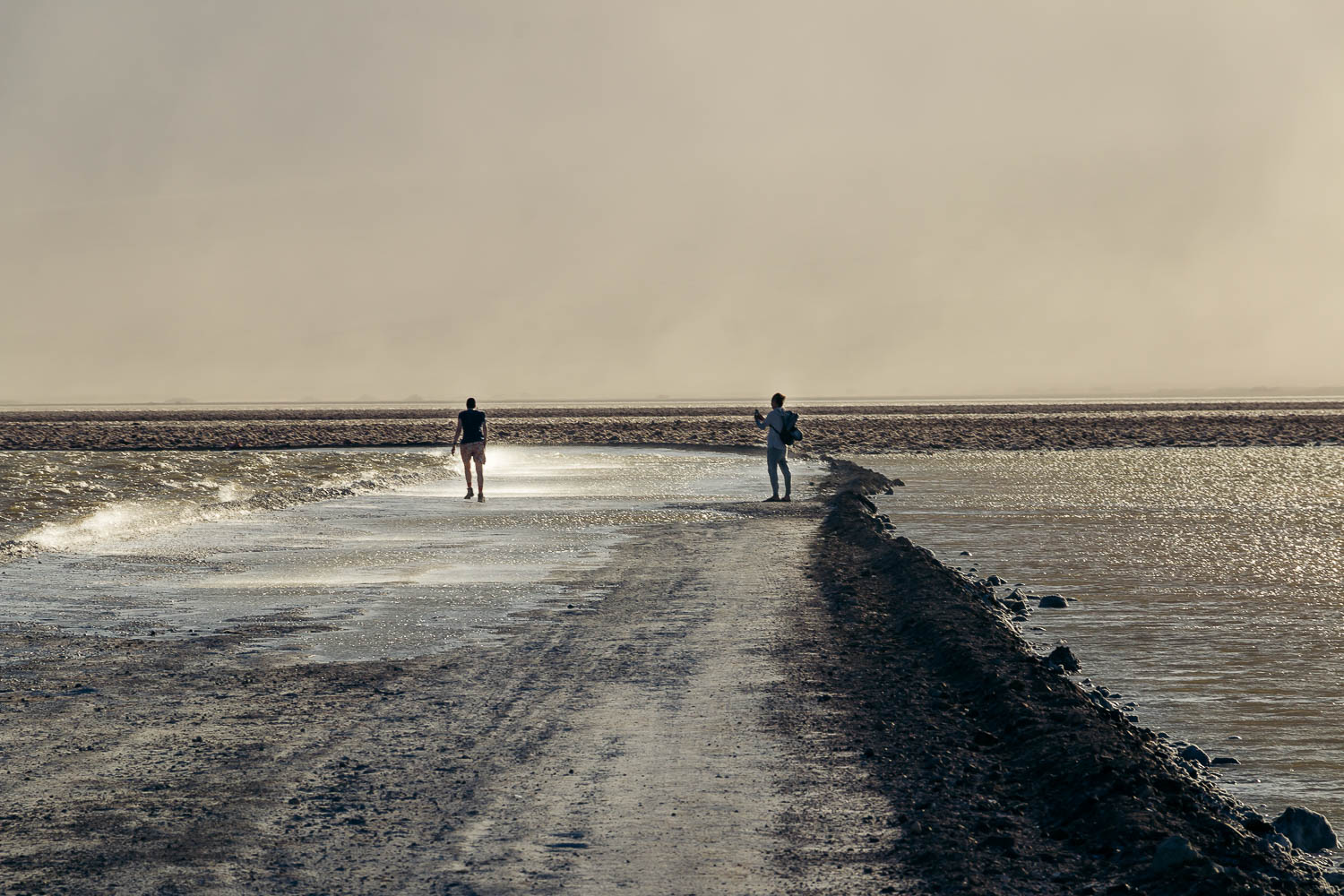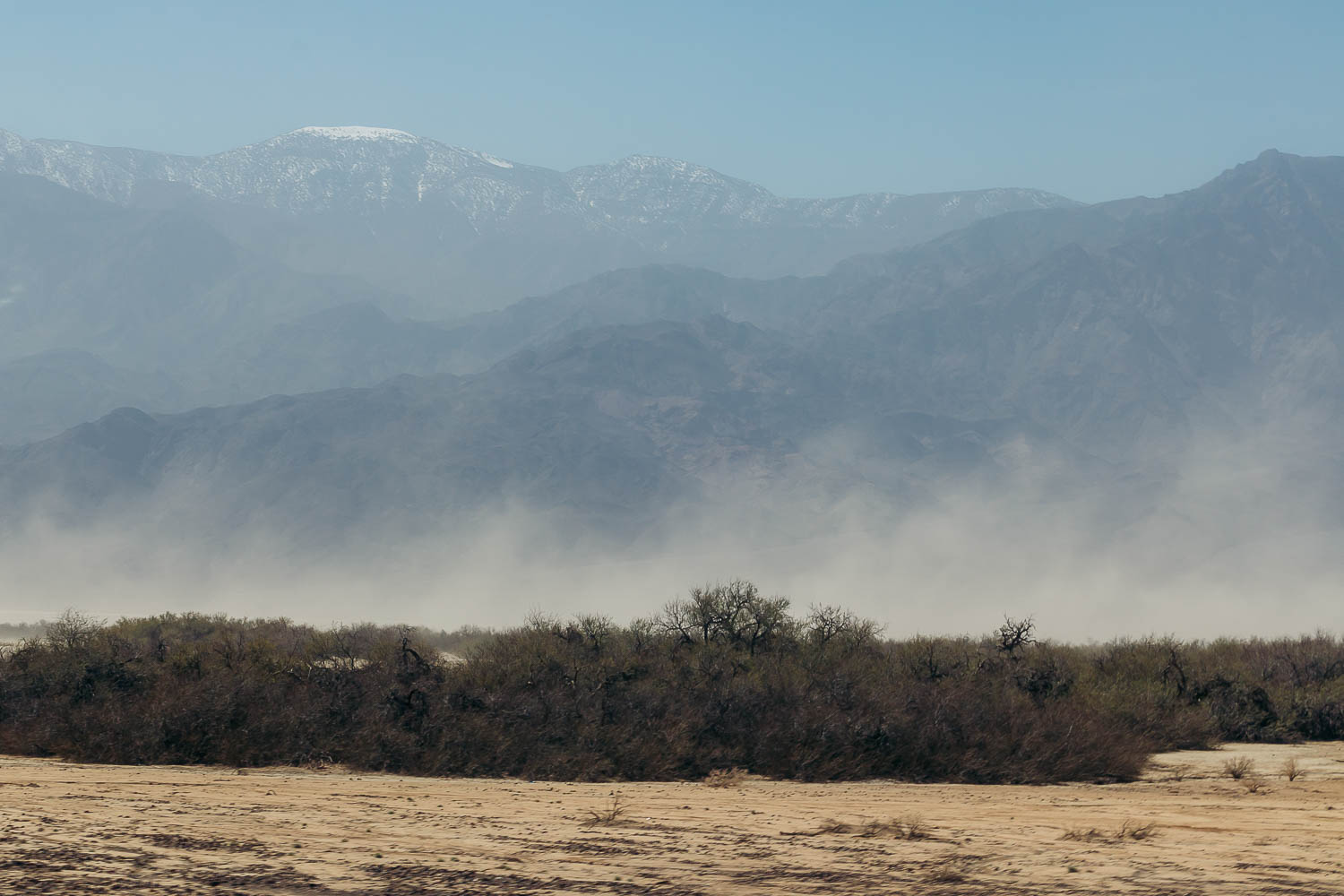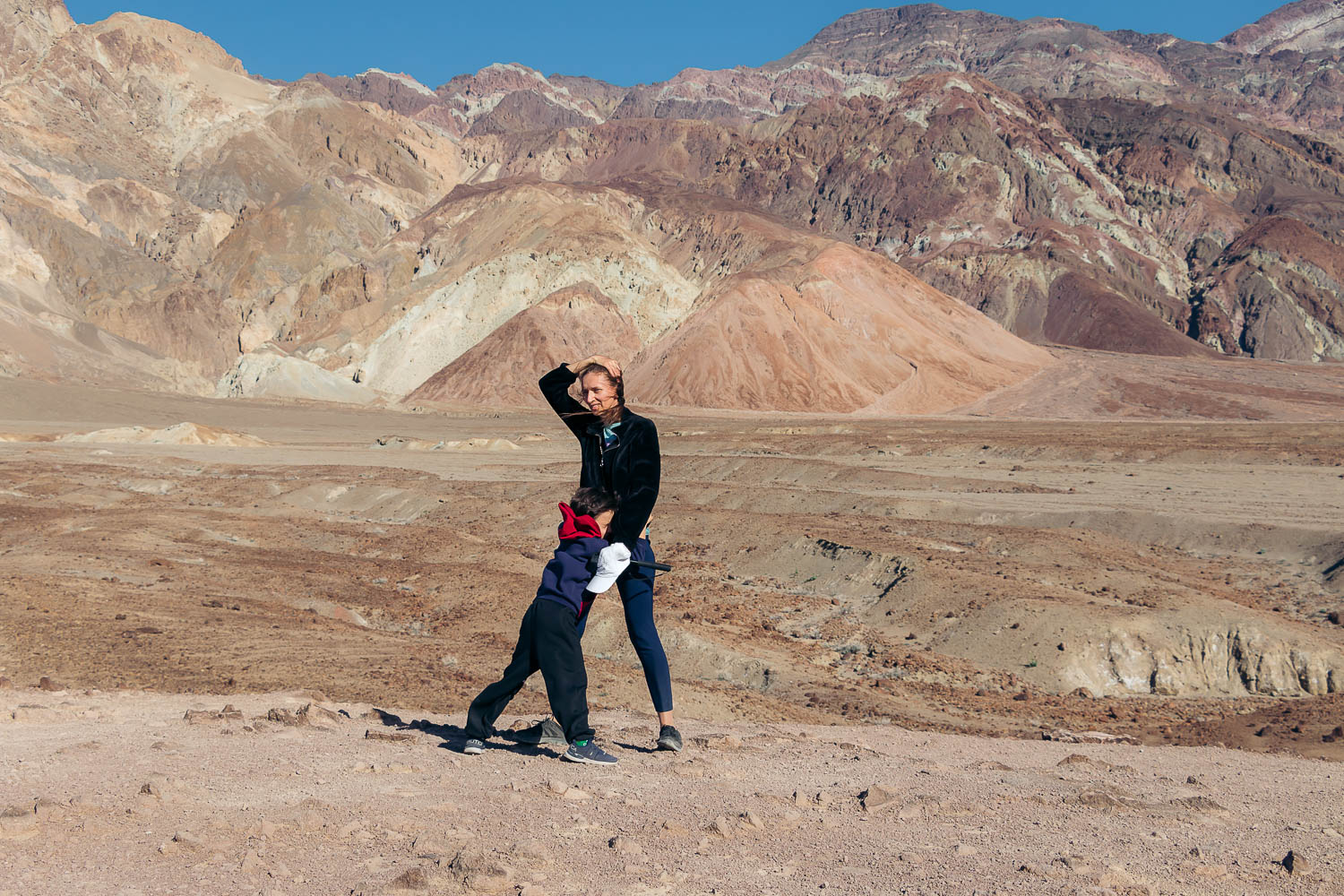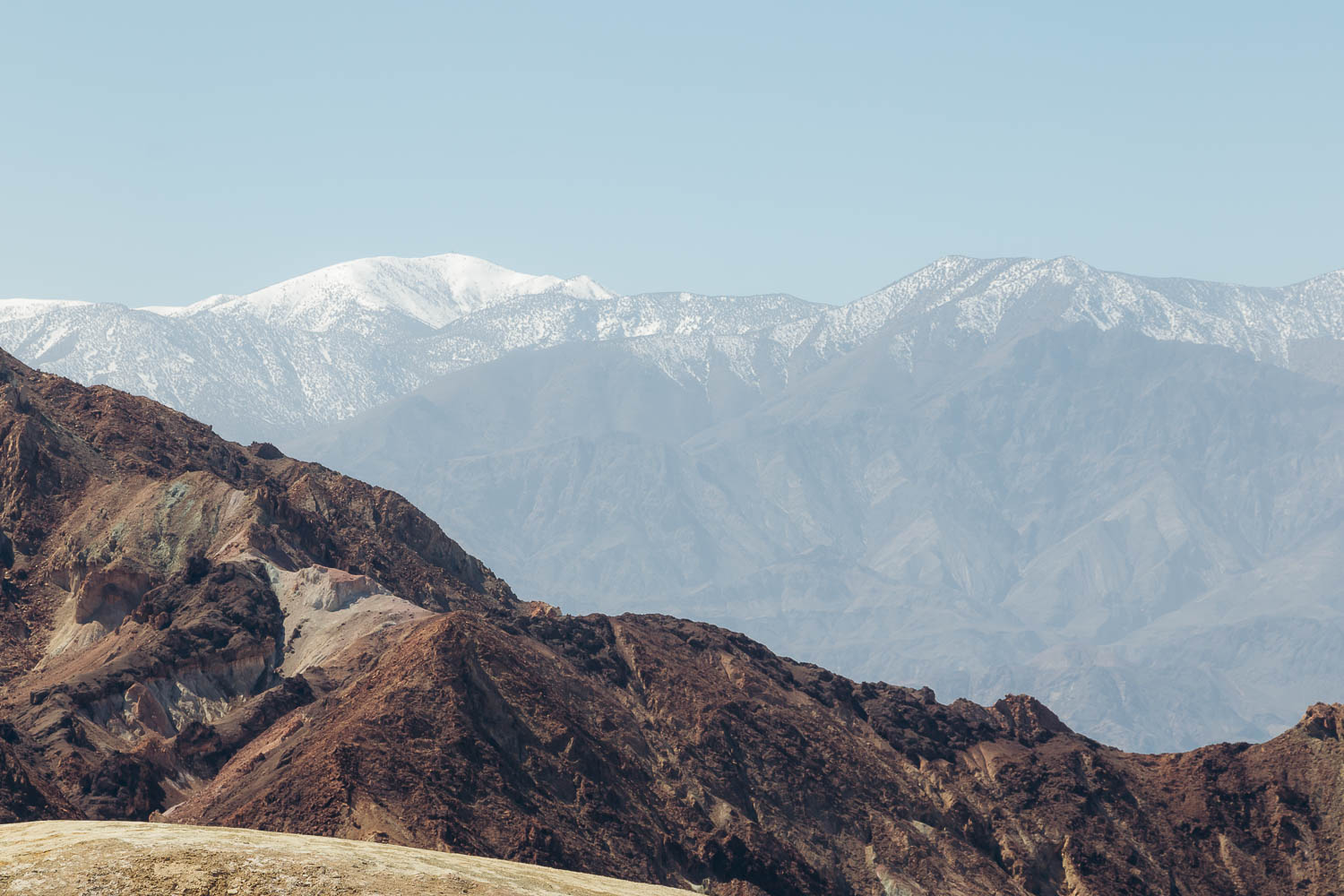Like a treasure box that gets replaced every time you get closer to it, the largest national park in California tried to keep its natural wonders hidden from us. First it was the scorching heat that drove us away a few minutes after our arrival. During the latest trip, Death Valley National Park blew us away with its fierce dust and sandstorms.
Last updated: April 5, 2024
Beautiful but Savage
Death Valley National Park blew us away. Not the kind of “blowing away” you expect in the largest and surprisingly colorful national park in the lower 48 states of the United States. But the “blowing” that, executed by fierce desert gusts, literally knocks you off your feet. The squall that uproots shallow-rooted shrubs and heaves piles of dust and sand into billows and swirls.
We had been driven out of Death Valley National Park by its merciless heat a few summers ago. An early-spring dust storm that started unexpectedly and blew unceasingly was a novelty.
Visiting Death Valley National Park in Spring: Dust and Sandstorms
Dust and sandstorms are common in Death Valley National Park in the springtime. Gusting winds, the permanent companions of the desert storms, kick up piles of sand and dust into the air and blow them across the desert valley.
The dust and, even rarely, sandstorms, however, are temporary occurrences that tear across the park without diminishing its vibrancy. In fact if you manage to bypass these natural phenomena or have a thick skin when it comes to flying particles of dust, spring is hands down the best time to visit Death Valley National Park.
The temperatures are manageable. Death Valley’s highs in the spring average between 82-100°F (28-38°C). The lows linger in the 55-72°F (13-22°C) temperature range.
Wildflowers that cover the floor of Death Valley cooperate with the most pleasant spring temperatures in March through mid-April. By the end of April and early May, Death Valley gets back on its consistent 100-degree-day marathon.
Read more: The 11 Best Places to See Wildflowers near Los Angeles – Southern California Superbloom

Gusting Winds in Death Valley National Park
No dust storm was in sight on an early spring morning. But the winds were furious. Fuming over intrusion and eliminating any possibility to linger on a trail or at Death Valley’s famous overlook a little bit longer, they drove away anybody who didn’t belong in the desert.
Spending more time outside meant tying your wide-brimmed hats or ditching any caps altogether, holding your little ones tightly by hands, and using a tripod and gimbal when taking photos or videos. Hand-holding was too shaky of a way in these windy conditions that Death Valley wasn’t going to change any time soon.
The Mojave Desert was far from being friendly in early March. Yet we would rather take this over its infamous heat that now diluted by the strong currents of air didn’t bother us. But yes, it was getting hotter. Having borne deep marks of the desert tan for a few months last year, I yet didn’t dare to take off my sweater. Better drenched in sweat that sun-burned…
The decision to stay “insulated” soon proved to be practical in another way. By the time we reached Golden Canyon, the gale that reigned over Death Valley intensified. As if becoming even more offended by visitors’ ignorance, the gust stirred up dust and erected sandy walls, a few feet tall, in the wide-open basin across the road from the canyon.

Seeking Refuge from the Dust Storm inside Death Valley’s Canyon
The towering cliffs of the canyon managed to subside the dust storm. Occasional rushes of wind would still blow tiny particles into our eyes, clog our ears with sand, and sprinkle our faces with dusty powder when we were not quick enough to turn our backs toward them.
Outside the canyon, the dust storm raked over the vast open spaces of Death Valley ferociously. It swept some plants and small stones. It wreaked havoc in Lake Manly, an ancient lake that reappeared in the park following recent rainstorms.
Only the Black Mountains, holding a sign that indicated sea level high above Badwater Basin, eased the untamed dust storm.
Read more: Tornado Warning in Nebraska. Look for Shelter Immediately

Violent Squalls Continued
The gale that whipped up sand and anything that didn’t have a strong hold of sturdy surface strengthened overnight. The storm, not the desert dust storm that had inconvenienced us the day before, was on the way. More than 100 inches of snow, a record snowfall of the season, was dumped in the Sierra Nevada by the end of that day.
Back in Death Valley amid the dust storm, I stopped wiping the sand off my face every time I got back to the car. There was no point. The sand was everywhere.
Death Valley was teasing us. A few years ago, the Mesquite Flat Sand Dunes had warmed our bodies to that point that a heat stroke was almost imminent. We escaped the ghastly heat inside our car, parked within a few-minute walk. A strong burst of air blasting from the AC had never felt as liberating as that day.
Death Valley’s infamous sand dunes looked even more frightening this time around. Most of the sandy piles were obscured behind a dense veil of the dust hovering above them. In an exaggerated gesture, Roshan touched the sand, proclaiming that he finally conquered these doomed dunes.
But did he really? Based on how fast he retreated to the car, it was quite obvious who remained the indisputable winner during the spring dust storms in Death Valley.

Read Next
- Death Valley’s painted hills: Is Artists Palette Worth Visiting? (Death Valley’s Painted Hills)
- Best hikes in Death Valley: Hiking Ubehebe Crater Trail in Death Valley National Park